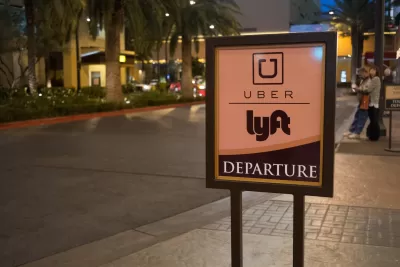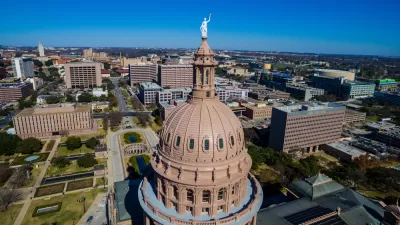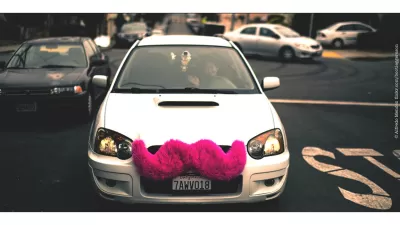As monopolies, especially local ones, loom in some other industries, Uber's predominance has been slipping. Will a duopoly between Uber and Lyft be enough to ensure quality ride-hailing?

Although Uber and Lyft have re-entered Austin's market "with a vengeance," where municipal laws previously kept them away, the prospect of a national Uber-only monopoly seems to be receding. As Joe Cortright writes, "During most of the past calendar year, rival ride-hailing firm Lyft has grown faster, and picked up market share. Nationally, estimates are that Uber's market share has fallen from more than 80 percent to less than 75 percent."
This follows "a series of widely publicized gaffes" from Uber, "ranging from sexual harassment claims against its executives, to a video of the company CEO disparaging one of its drivers, to the ultimate resignation of founder Travis Kalanick." One result has been an informal #deleteUber social media campaign.
Cortright shows that while Uber's still a lot bigger, Lyft rivals its market share in many municipalities. "In general, Lyft has made the biggest inroads in major West Coast markets; in Portland, Lyft has a 45 percent market share, making it a very close rival to Uber."
A duopoly between the two companies may benefit customers, who can switch between the services with little difficulty if they have a bad experience. But a wider field of competitors still seems unlikely in the short term.
FULL STORY: Uber and Lyft: A dynamic duo(poly)?

Maui's Vacation Rental Debate Turns Ugly
Verbal attacks, misinformation campaigns and fistfights plague a high-stakes debate to convert thousands of vacation rentals into long-term housing.

Planetizen Federal Action Tracker
A weekly monitor of how Trump’s orders and actions are impacting planners and planning in America.

In Urban Planning, AI Prompting Could be the New Design Thinking
Creativity has long been key to great urban design. What if we see AI as our new creative partner?

King County Supportive Housing Program Offers Hope for Unhoused Residents
The county is taking a ‘Housing First’ approach that prioritizes getting people into housing, then offering wraparound supportive services.

Researchers Use AI to Get Clearer Picture of US Housing
Analysts are using artificial intelligence to supercharge their research by allowing them to comb through data faster. Though these AI tools can be error prone, they save time and housing researchers are optimistic about the future.

Making Shared Micromobility More Inclusive
Cities and shared mobility system operators can do more to include people with disabilities in planning and operations, per a new report.
Urban Design for Planners 1: Software Tools
This six-course series explores essential urban design concepts using open source software and equips planners with the tools they need to participate fully in the urban design process.
Planning for Universal Design
Learn the tools for implementing Universal Design in planning regulations.
planning NEXT
Appalachian Highlands Housing Partners
Mpact (founded as Rail~Volution)
City of Camden Redevelopment Agency
City of Astoria
City of Portland
City of Laramie




























